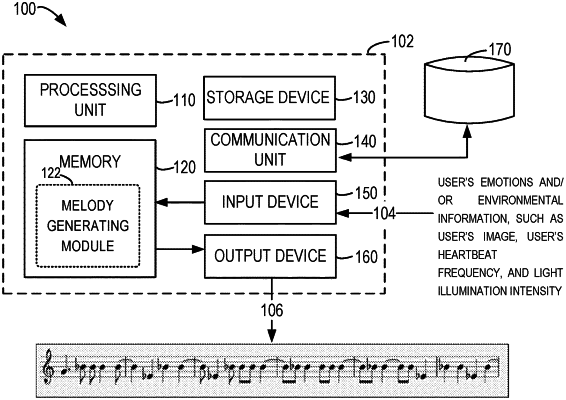| CPC G10H 1/0025 (2013.01) [G06N 20/00 (2019.01); G10H 2210/111 (2013.01); G10H 2220/351 (2013.01); G10H 2240/081 (2013.01); G10H 2240/085 (2013.01); G10H 2250/311 (2013.01)] | 20 Claims |

|
1. A computer-implemented method, comprising:
detecting a user emotion and/or environmental information;
selecting a first melody feature parameter corresponding to a first reference melody from a plurality of melody feature parameters based on the user emotion and/or the environmental information, each of the plurality of melody feature parameters corresponding to a respective one of a plurality of reference melodies, wherein each reference melody is encoded via an encoder of a variational autoencoder (VAE) trained on the reference melodies to generate the plurality of melody, feature parameters; and
generating, via a decoder of the VAE, a first melody conforming to the music style based on the first melody feature parameter; the first melody being different from the first reference melody.
|